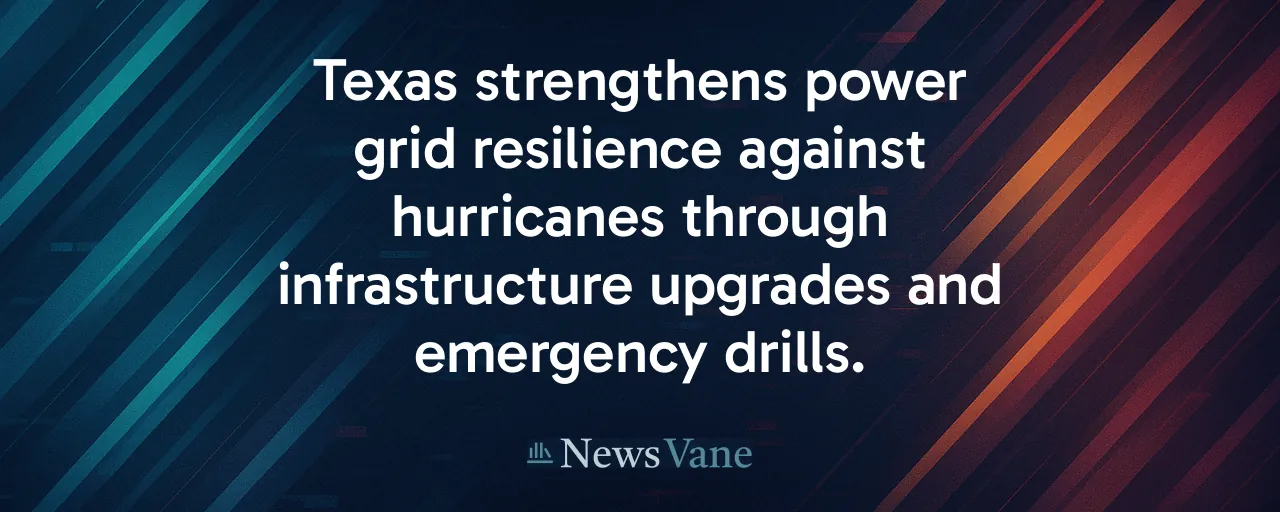Gearing Up for the Storm
With hurricane season approaching, Texas is on high alert. Governor Greg Abbott recently gathered leaders from CenterPoint Energy, Entergy Texas, and American Electric Power Texas at the State Emergency Operations Center. Their mission was straightforward: ensure the state's power grid can endure the intense storms that may hit between June and November. This meeting underscores a growing resolve to protect Texans from the chaos of widespread outages.
Past disasters have sharpened this focus. The 2021 Winter Storm Uri left millions in the dark for days, revealing cracks in the state's energy system. Hurricane Beryl disrupted power for over two million customers, with some waiting nearly a week for electricity. These events have spurred Texas to strengthen its defenses, blending state oversight with utility action to keep the grid reliable when it matters most.
Building a Tougher Grid
Energy providers detailed extensive upgrades. CenterPoint Energy has swapped out 26,000 wooden poles for composite ones built to withstand high winds and added 400 miles of underground lines to protect against flooding. They've also deployed 100 micro weather stations to track conditions in real time, aiding outage predictions. Entergy Texas ran a mock Category 5 hurricane drill, reducing estimated restoration times by 17 percent through mobile command centers and satellite-linked communications.
ERCOT, which oversees Texas' power grid, added 13,500 megawatts of capacity since last summer, including solar, wind, batteries, and fast-start gas turbines. This lifts the grid's reserve margin above 24 percent, offering a cushion against storm-driven demand spikes. A $5 billion Texas Energy Fund investment ensures backup power for coastal hospitals and water plants, critical during emergencies.
These steps reflect national efforts. The U.S. Department of Energy's Grid Resilience and Innovation Partnerships program has poured billions into fortifying power systems, with Texas securing funds for sensor networks and mobile microgrids. Such measures aim to limit the economic and human toll of outages, which can paralyze communities for days.
Speed, Reliability, and Tough Choices
Rapid response is a priority. Utilities have pre-positioned 10,000 mutual-assistance lineworkers and 4,500 vehicles at inland hubs, poised to act when storms strike. New policies allow ERCOT to temporarily cut power to large industrial users, like data centers, to keep homes lit during crises. CenterPoint's upgraded outage portal, capable of serving 40,000 users at once, keeps customers informed in real time.
Some voices call for a broader approach. Advocates for climate resilience argue that expanding renewable energy and storage could make the grid more durable and sustainable. National Renewable Energy Laboratory data suggest that renewables, paired with batteries, cut blackout risks by diversifying energy sources. Texas, a leader in wind and solar, is growing these resources but relies heavily on natural gas for storm-time reliability.
Others emphasize immediate, tested solutions. Policymakers highlight new fast-start reserves and dual-fuel generators as essential to prevent another Uri-scale failure. This tension, between quick fixes and long-term transformation, shapes Texas' strategy as it balances reliability with innovation in a state known for its energy prowess.
A Collective Effort
Collaboration drives Texas' plan. The Public Utility Commission and Division of Emergency Management are working hand-in-hand with utilities to speed up restoration. Bilingual outage trackers and priority passes for utility convoys aim to cut delays and keep the public in the loop. Federal ties, through FEMA's National Business Emergency Operations Center, bolster coordination, ensuring generator deliveries and infrastructure repairs during disasters.
The stakes are deeply human. Extended outages threaten vulnerable groups, like seniors or those dependent on medical equipment. Equity advocates note that low-income areas often face the longest power cuts, pushing for microgrids and backup power in these communities. Texas' $196 million investment in mobile microgrids targets this gap, keeping critical facilities operational.
The road ahead is daunting. Climate projections warn of fiercer hurricanes and hotter summers, testing the grid's limits. Texas' proactive measures, from infrastructure hardening to emergency drills, signal a strong commitment to resilience. Yet, with millions of lives at stake, the state recognizes the need for vigilance and continuous evolution.
